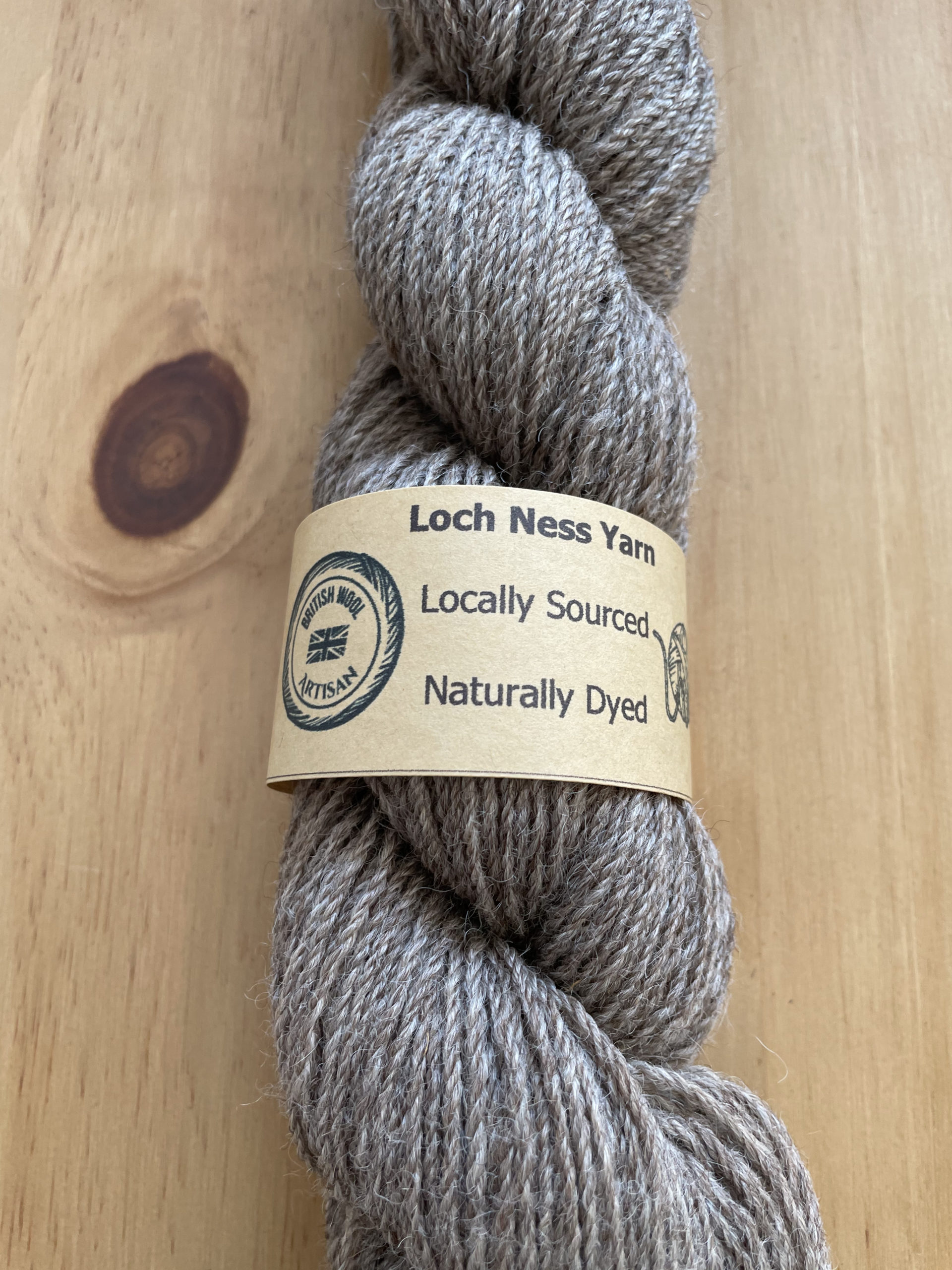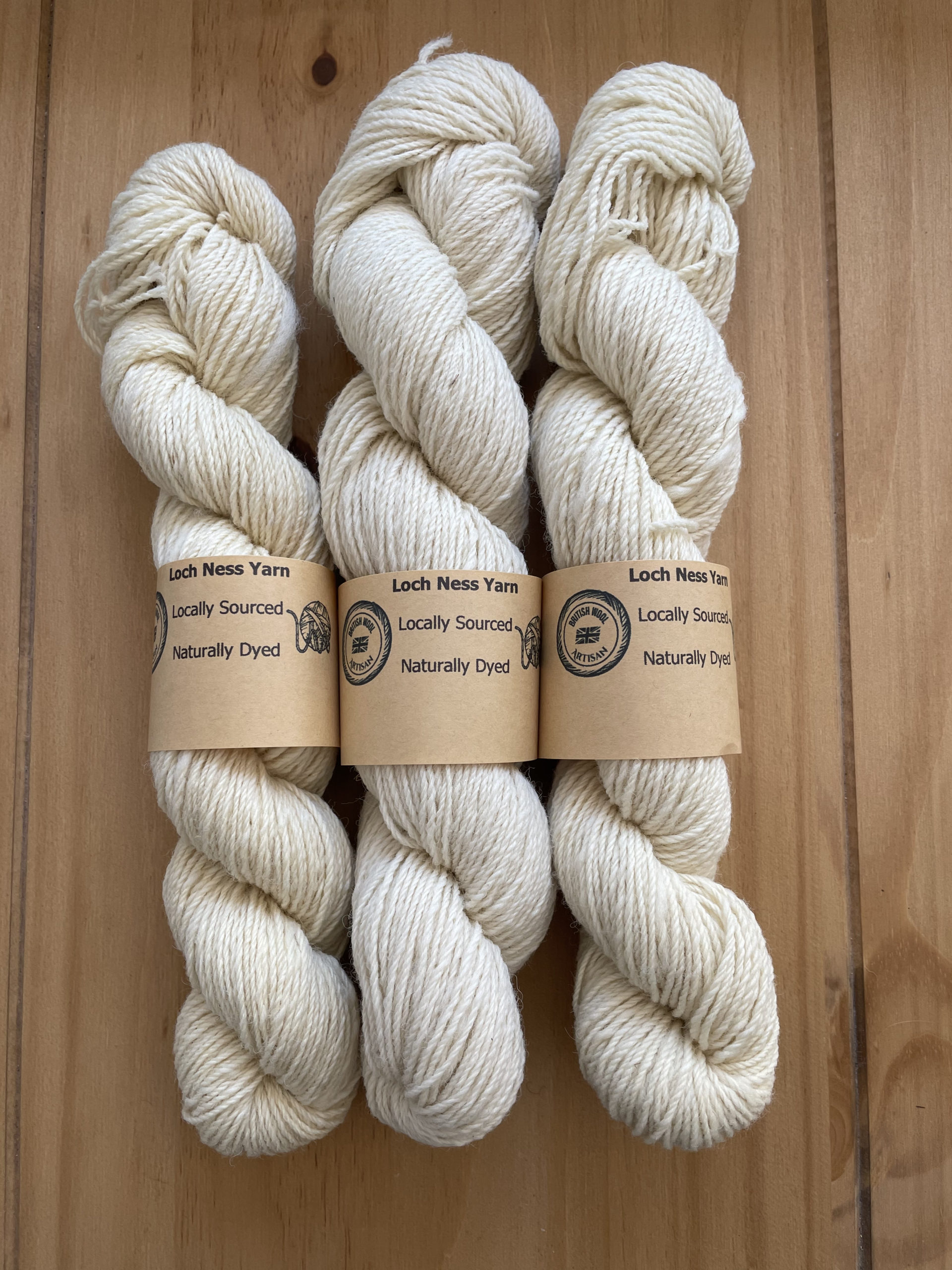About the project
Loch Ness Yarn is a 100% locally sourced hand dyed yarn researched and developed by Dwynwen Hopcroft at Loch Ness Knitting. Loch Ness Yarn does not leave Scotland until it is sent to the customer.
Loch Ness Yarn is taking on the challenges of wool production in the Scottish Highlands due to rough weather, rough grazing, transportation and low market prices. The process represents an innovative, community based model of circular production, bringing together local partners that share the core sustainable values of Loch Ness Knitting. Dwynwen worked with local farms to source fleece from within 12 miles of the Loch Ness shoreline to make the yarn. Farming partners are committed to high standards of animal welfare and environmental responsibility through sustainable and regenerative grazing. Undertaking every process from flock to point of sale provides her with the flexibility and options to bring out the best in the local fleece.


The fleece is a mix of pedigree and cross breeds (Shetland, Cheviot and Hampshire Downs) that fare well in the wet and windy conditions of the Highlands. Once shearing is completed in summer / early autumn, individual fleeces are air dried, inspected (quality assessed for spinning), skirted (removal of vegetable matter), snap tested for length and strength before picking (manually sorting). These processes are done at the farm so all waste can remain on site and be used as tree mulch. Fleece is graded to distinguish finer fleece to be hand spun. The rest is sent to The Border Mill who use their expertise to spin into single origin or blended small batches to minimise waste.
Skeins of Loch Ness Yarn are available in natural (DK weight) for dyeing, or a selection of hand dyed colours using sustainable, natural dyes made from locally sourced invasive or problem plants or repurposed waste materials (from e.g. local cafes) that haven’t travelled a long way and therefore have a small carbon footprint. Minimum amounts of energy and water are used in the process and waste is kept to a minimum.

Dwynwen is thankful to the wool community of the Highlands and Islands for supporting and informing her research, including Barkland Croft, Birlinn Yarn, Uradale Yarns and Uist Wool.
Test batches of yarn, experimentation and the setup of equipment to realise Loch Ness Yarn is possible through funding from Creative Scotland.

